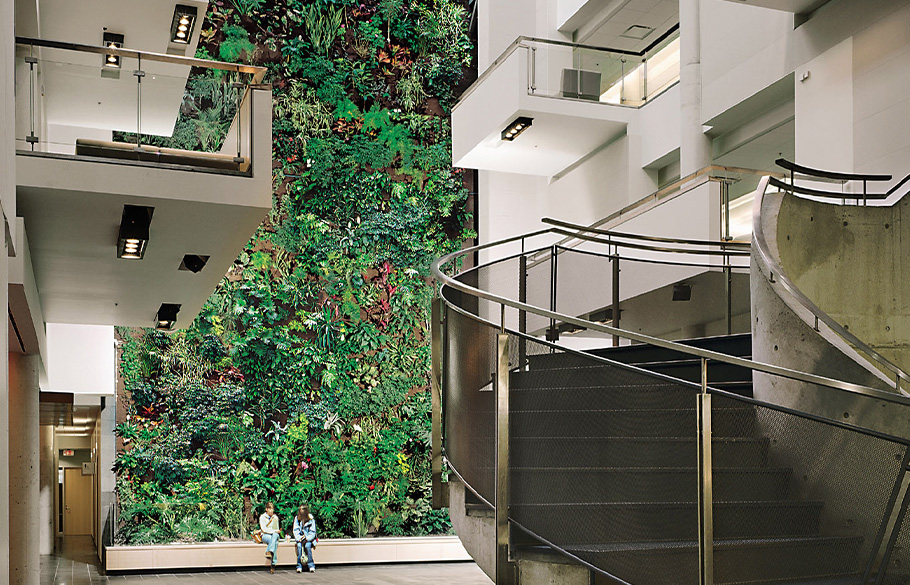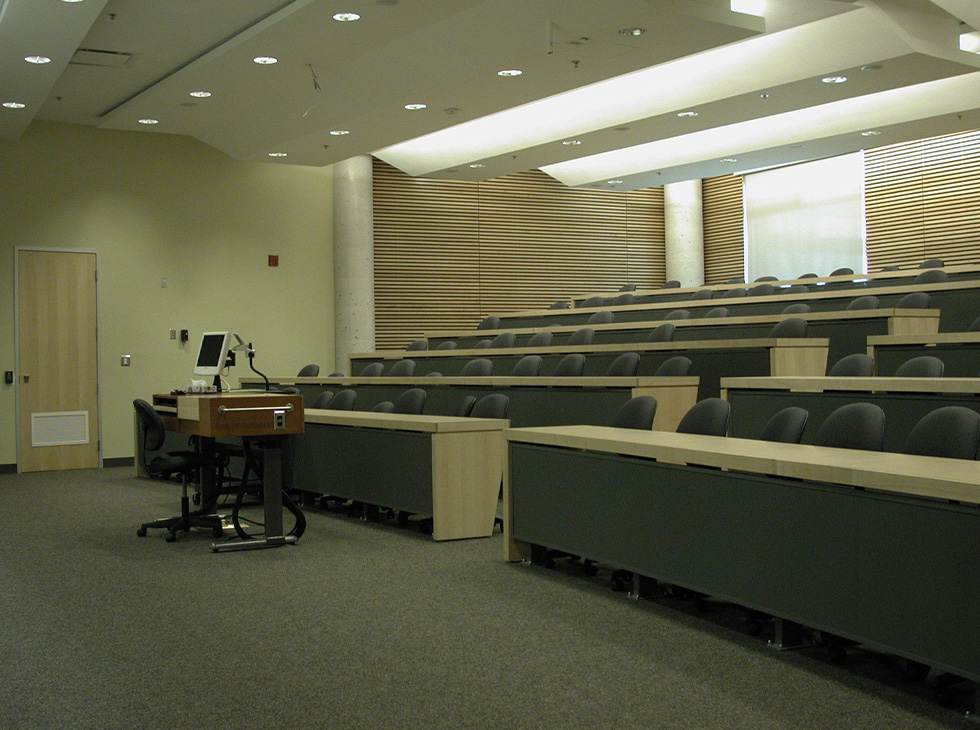
Among many green designs being introduced in educational facilities, the University of Guelph-Humber implemented a sustainable facility, focused on renewable and efficient energy. The major feature of the building’s atrium, the biofilter wall, is a four-story “living wall” containing more than 1,000 plants that continually improve the air quality and create a natural source of fresh air. Placed under a skylight, it is designed to be seen from all common areas in the building.
Incorporating the “living wall” into the ventilation system was a main priority of the CEL Gruen team. The wall acts as an indoor air filter purifier, pulling air through the wall and into the mechanical ducts. Research at the University has shown that substances known to contribute to “sick building syndromes” (problems that contribute to employee absenteeism) such as benzene and toluene can be removed with up to 50% efficiency. The wall naturally cools the air in the summer and humidifies the air in the winter.
In order to enhance the conservation of energy in this building the following techniques were used:


2005 Award of excellence from the Royal Architecture Institute of Canada.
“This is our first living wall and still one of our largest. Fully integrated into the building air handling system, and capable of delivering 40,000 CPM, this living wall biofilter is supplied by natural light, and supplemented with architectural lighting. This living wall contributed towards the building receiving a 2005 award of excellence from the Royal Architecture Institute of Canada.” statement by D. Schmitt about the University of Guelph-Humber project.